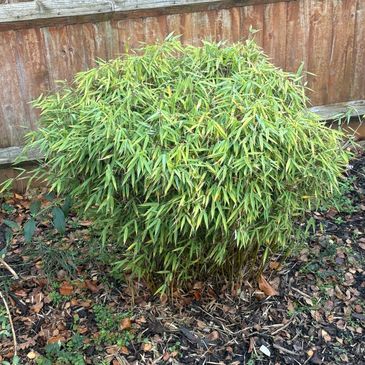Bamboo Overview
Bamboo
Clumping Bamboo
Running Bamboo
Bamboo is often valued for its ability to create natural screens, offering an attractive and decorative appearance that many find appealing. However, its rapid growth has made it notably invasive, often presenting challenges for homeowners seeking to manage it effectively.
The UK Weed Industry has highlighted bamboo as a growing problem for homeowners, whether it has been intentionally planted or has spread unintentionally onto their land.
With bamboo plants being sold widely online and in garden centres throughout the UK, many homeowners may not fully understand the potential impact on their property or the steps needed for proper management.
Due to its invasive tendencies, bamboo can rapidly spread beyond its designated area, encroaching on neighboring land and in some instances potentially causing structural damage to nearby buildings. Therefore, it is essential to understand the various types of bamboo and their specific characteristics.
Bamboo comes in many varieties, each with its own growth patterns, some more aggressive than others.
Running Bamboo
Clumping Bamboo
Running Bamboo
Running bamboo is a fast-growing variety which extends its root system underground, potentially reaching up to 30 meters from the original clump. This growth often goes unnoticed, making it particularly insidious.
Running bamboo can cause significant damage to buildings and surrounding structures as it can infiltrate cracked pipes, drains, brickwork, driveways, patios and pavements.
While there are no specific laws regulating bamboo, landowners and homeowners are protected from potential encroachment issues under public nuisance legislation.
If encroachment occurs and is not addressed, legal action may be pursued against the responsible property owner.

Clumping Bamboo
Clumping Bamboo
Clumping Bamboo
Clumping bamboo is generally less invasive than its running counterpart, as its shoots grow close together. The rhizomes of clumping bamboo grow vertically, in contrast to the horizontal growth of running bamboo. Although it is less aggressive, clumping bamboo can still overtake its designated space, overpower neighboring plants, and invade areas meant for other purposes. As it expands, it can cause damage, making early management through containment methods essential.
While running bamboo reaches its mature height rapidly, typically growing between 8 to 10 meters and spreading its roots quickly, clumping bamboo grows to a maximum height of about 5 meters. If left unmanaged, clumping bamboo can still spread significantly over time, growing between 30 to 45 cm taller each year until it reaches its optimal height.
Proper management and early containment are key to preventing both types from becoming a nuisance.
Chenviro
Copyright © 2025 C H ENVIRO LTD - All Rights Reserved.


